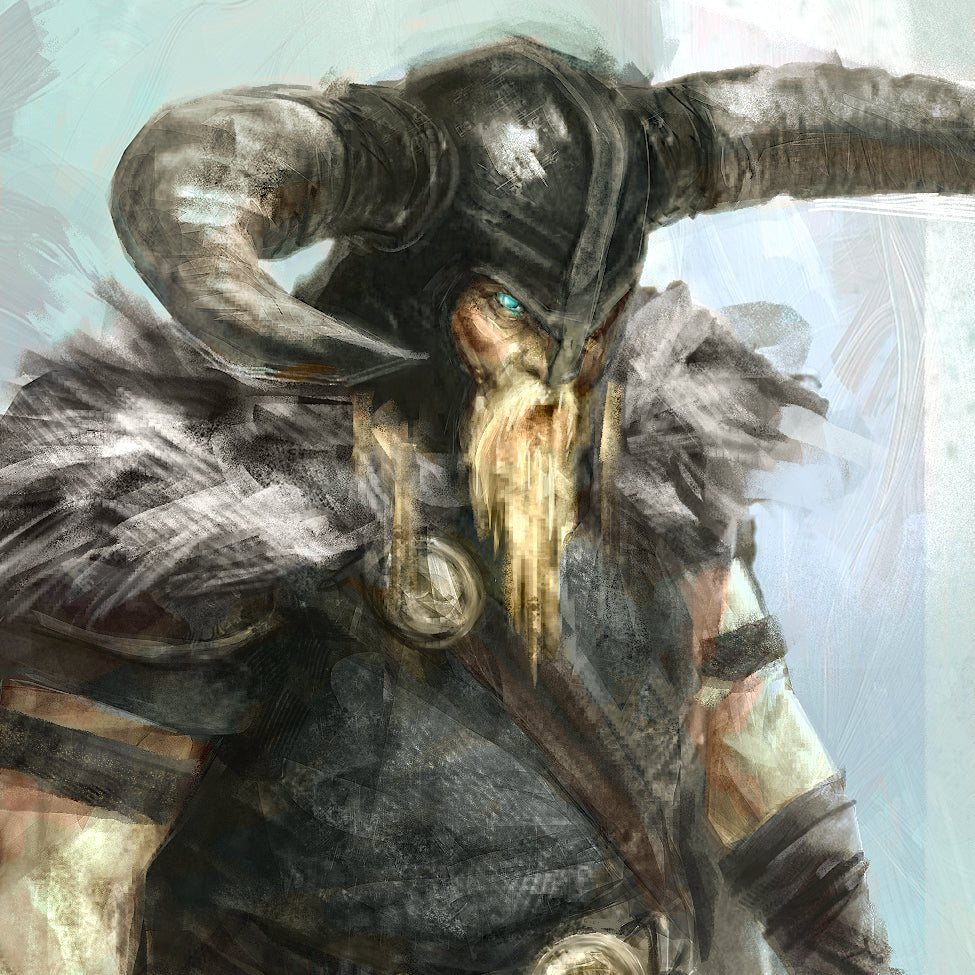Heimdall (pronounced “HAME-doll;” Old Norse Heimdallr) is the Watchman of the Norse Gods. He guards the entryway of Asgard, the realm of the Gods and stands firm at the edge of the Bifrost, the rainbow bridge that connects Asgard to Midgard.
Physically, Heimdall is known as the shining God. His skin is white as snow and his teeth are golden, matching the gold of his armor.

…
His dwelling is called Himinbjörg (“Sky Cliffs,” connoting a high place ideal for a fortress), which sits at the top of Bifrost, the rainbow bridge that leads to Asgard. He requires less sleep than a bird. His eyesight is so keen that he can see for hundreds of miles by day or by night, and his hearing is so acute that he can hear grass growing on the ground and wool growing on sheep. Here he watches and listens, holding at the ready the horn Gjallarhorn (“Resounding Horn”), which he sounds when intruders are approaching.
During Ragnarok, the Gods will know that their doom is at hand when they hear the dire call of Gjallarhorn signaling the imminent arrival of the giants. Led by Loki, they will cross the rainbow bridge to storm Asgard and kill the Gods. During the final battle, Loki and Heimdall will slay each other as the world burns and sinks into the sea.

Much more than a mere watchman, Heimdall also helped establish the hierarchical structure of Norse society, thus helping shape its fate. In the Norse poem Rigsthula, Heimdall slept with three different human couples from different social classes for three nights. In the poem, these couples are named “Great-Grandparents,” “Grandparents,” and “Parents.” The social classes were serfs, peasants, and nobles.
The first born was an ugly, but strong boy named Thrall—ancestor of all serfs. Then came Karl, the ancestor of all peasants and skilled farm worker. Finally, Jarl, the ancestor of all warriors and nobles, was born with great intellect and the skills of hunting and combat. The names of the three sons became the words that denoted the three social classes in the Norse language.
Heimdall is a son of Odin, born from nine mothers who were all sisters. Some scholars have attempted to equate Heimdall’s nine mothers with the nine daughters of the sea giant Aegir, but this interpretation is somewhat discredited by the fact that Heimdall’s mothers had different names than of Aegir’s daughters.
Heimdall is often associated with the ram, but, despite a number of interesting yet ultimately entirely speculative interpretations from various scholars, the connection is unclear. In the book Gylfaginning of Prose Edda, Heimdall is said to possess a horse named Gulltoppr, which means “golden mane” or “golden top”.
A notoriously enigmatic verse in one Old Norse poem states that Heimdall’s hljóð is hidden beneath the world tree Yggdrasil. The word hljóð has a wide variety of meanings, and could equally refer to Gjallarhorn, Heimdall’s hearing in an abstract sense, or his hearing represented in concrete form as an ear. This could mean that Heimdall’s hearing is connected to Yggdrasil itself, denoting its titanic prowess.

Sources:
Simek, Rudolf. 2007 (1993). Translated by Angela Hall. Dictionary of Northern Mythology. D.S. Brewer. ISBN 0-85991-513-1
Orchard, Andy. 1997. Dictionary of Norse Myth and Legend. Cassell. ISBN 0-304-34520-2
Jesse Byock (2005) Snorri Sturluson, The Prose Edda. 1st. edition. London, England: Penguin Books Ltd. ISBN-13 978-0-140-44755-2
Faulkes, Anthony. Trans. 1982. Edda. Oxford University Press. ISBN-13: 9781389651922
Daniel McCoy. 2016. The Viking Spirit: An Introduction to Norse Mythology and Religion. 1st edition. CreateSpace Independent Publishing Platform. ISBN-13 978-1533393036












